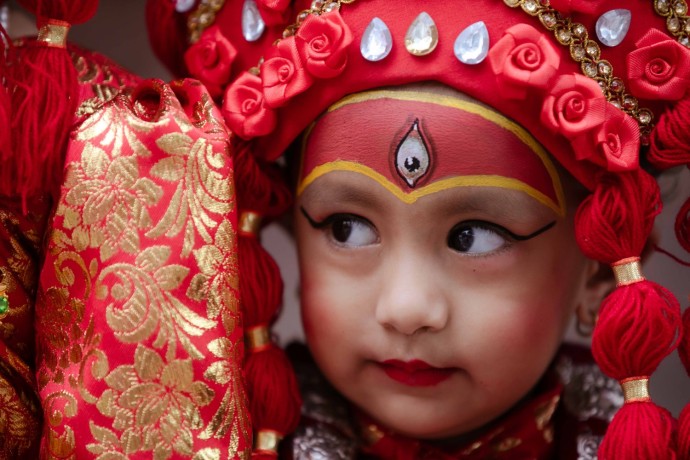The Living Goddess: Kumari of Nepal Professional
Sep 19th, 2023 at 03:46 Blogs Kathmandu 656 views Reference: 707Location: Kathmandu
Price: Contact us
The Living Goddess: Kumari of Nepal
Introduction
Nepal, a land of diverse cultures and rich traditions, is home to a unique and revered tradition known as the Kumari Devi, or simply, the Kumari. This tradition involves the selection and worship of a young girl as the living embodiment of the goddess Taleju, a manifestation of the Hindu goddess Durga. In this article, we will delve into the fascinating world of the Kumari of Nepal, exploring her history, role, and the cultural significance of Kumari she holds in the country.
The Origins of Kumari Tradition
The Kumari tradition dates back several centuries, with roots in both Hinduism and Buddhism. The word "Kumari" itself means "virgin" in Sanskrit, signifying the purity and innocence expected of the young girl who becomes the Kumari. While the Kumari tradition is predominantly observed in the Kathmandu Valley, the most famous Kumari resides in the heart of Kathmandu itself.
The Selection Process
The selection of the Kumari is a rigorous and elaborate process. Girls between the ages of five and seven from the Newar community of the Kathmandu Valley are eligible to be considered. The selection committee, comprising religious and cultural experts, looks for specific physical attributes and qualities in the candidates, such as flawless skin, hair, and eyes, along with a calm demeanor. Once chosen, the Kumari undergoes a series of rituals and initiations.
One of the most significant is the Kumari Jatra, during which she is taken on a procession through the streets of Kathmandu in a chariot, adorned in her traditional attire, which includes a red tunic, a crown, and jewelry. This public display officially announces her role as the Kumari to the people.
The Life of the Kumari
The Kumari lives in the Kumari Ghar, a palace in Kathmandu Durbar Square, which serves as her residence throughout her tenure. She is not allowed to leave the palace except for certain religious and ceremonial occasions. The Kumari is expected to maintain her purity and detachment from the ordinary world. She receives education within the palace and is taught various rituals, dances, and languages, including Sanskrit and Newari.
The Kumari's primary role is to provide blessings and darshan (audience) to devotees who visit her during designated times. Her presence is considered highly auspicious, and it is believed that her blessings bring good fortune. Devotees often seek her guidance and blessings for various life events, from marriages to childbirth and business ventures.
The Retirement of the Kumari
The Kumari tradition is unique in that it is not a lifelong commitment. Once she reaches puberty or menstruates, the Kumari is considered impure and is retired from her role. A new Kumari is then selected to replace her, and she returns to a regular life as a private citizen. The retired Kumari is provided financial support and often marries later in life.
Cultural Significance of Kumari
The Kumari tradition is a vital aspect of Nepal's cultural and religious heritage. It symbolizes the deep-rooted reverence for the divine feminine and reflects the harmonious coexistence of Hinduism and Buddhism in the country. The Kumari is not only a living goddess but also a symbol of purity, innocence, and the connection between the divine and human realms. Conclusion The Kumari of Nepal is a living testament to the country's rich cultural and religious diversity. She embodies the spiritual beliefs and traditions that have shaped Nepal's identity for centuries. The selection, life, and retirement of the Kumari are steeped in rituals and symbolism, making her a cherished figure in the hearts of the Nepali people and a source of wonder for visitors from around the world.


